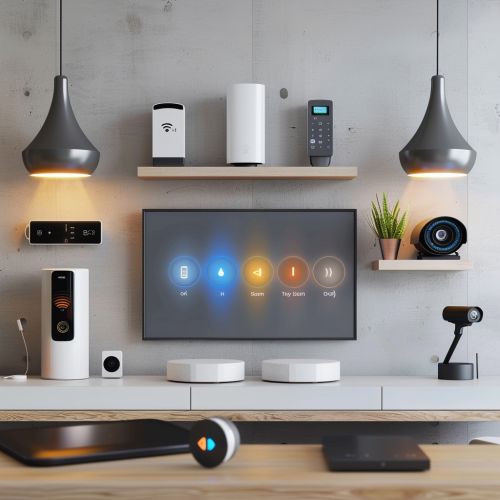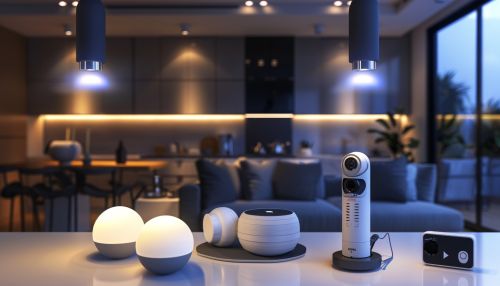The Internet of Things
Introduction
The Internet of Things (IoT) refers to the network of physical objects—devices, vehicles, buildings, and other items—embedded with electronics, software, sensors, and network connectivity that enables these objects to collect and exchange data. The IoT allows objects to be sensed and controlled remotely across existing network infrastructure, creating opportunities for more direct integration of the physical world into computer-based systems, resulting in improved efficiency, accuracy, and economic benefit.
History
The concept of IoT has evolved over time, with its roots tracing back to the early 1980s when the idea of adding sensors and intelligence to basic objects was discussed. The term "Internet of Things" was coined by Kevin Ashton in 1999 during his work at Procter & Gamble, where he was working on supply chain optimization. The development of RFID (Radio-Frequency Identification) technology was a significant milestone in the evolution of IoT.
Components of IoT
IoT systems are composed of several key components:
Sensors and Actuators
Sensors are devices that detect and measure changes in the environment, such as temperature, humidity, motion, or light. Actuators, on the other hand, are devices that can cause a physical change in the environment, such as turning on a light or opening a valve.
Connectivity
Connectivity refers to the communication protocols and networks that connect IoT devices to each other and to central systems. Common connectivity options include Wi-Fi, Bluetooth, Zigbee, and cellular networks.
Data Processing
Data processing involves the collection, storage, and analysis of data generated by IoT devices. This can be done locally on the device, at the edge of the network, or in the cloud.
User Interface
The user interface is the means by which users interact with IoT systems. This can include mobile apps, web interfaces, or voice assistants.
Applications of IoT
IoT has a wide range of applications across various industries:
Smart Homes
Smart home devices include smart thermostats, lighting systems, security cameras, and home assistants. These devices can be controlled remotely and can automate various household tasks.


Healthcare
In healthcare, IoT devices can monitor patients' vital signs, track medication adherence, and provide remote consultations. Wearable devices like fitness trackers and smartwatches are also part of this ecosystem.
Industrial IoT (IIoT)
Industrial IoT refers to the use of IoT in manufacturing and industrial processes. This includes predictive maintenance, asset tracking, and real-time monitoring of production lines.
Agriculture
IoT in agriculture, also known as smart farming, involves the use of sensors and connected devices to monitor soil conditions, track livestock, and optimize irrigation systems.
Transportation
In transportation, IoT enables the development of connected vehicles, smart traffic management systems, and logistics optimization.
Challenges and Concerns
Despite its potential, IoT faces several challenges and concerns:
Security
IoT devices are often vulnerable to cyberattacks due to their limited processing power and lack of robust security measures. Ensuring the security of IoT systems is a critical concern.
Privacy
The collection and analysis of vast amounts of data by IoT devices raise significant privacy concerns. There is a need for clear regulations and standards to protect users' privacy.
Interoperability
The lack of standardization and interoperability among IoT devices and platforms can hinder the seamless integration of different systems.
Scalability
As the number of IoT devices grows, managing and scaling these systems becomes increasingly complex.
Future Trends
The future of IoT is expected to be shaped by several emerging trends:
Edge Computing
Edge computing involves processing data closer to the source of data generation rather than relying on centralized cloud servers. This can reduce latency and improve the efficiency of IoT systems.
5G Technology
The deployment of 5G networks will provide faster and more reliable connectivity for IoT devices, enabling new applications and use cases.
Artificial Intelligence (AI)
AI and machine learning can enhance IoT systems by enabling predictive analytics, autonomous decision-making, and improved data processing.
Blockchain
Blockchain technology can provide secure and transparent data management for IoT systems, addressing some of the security and privacy concerns.
